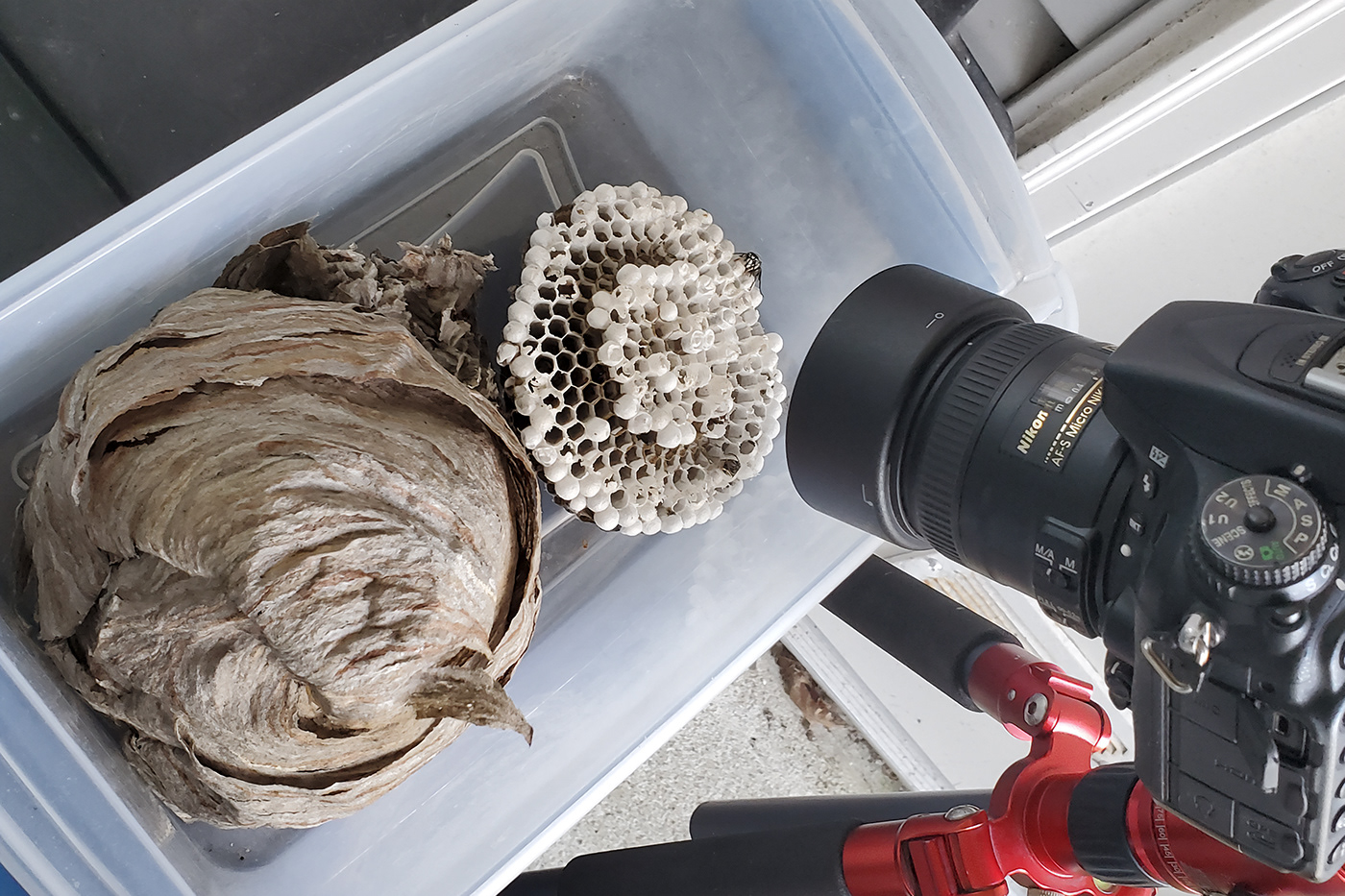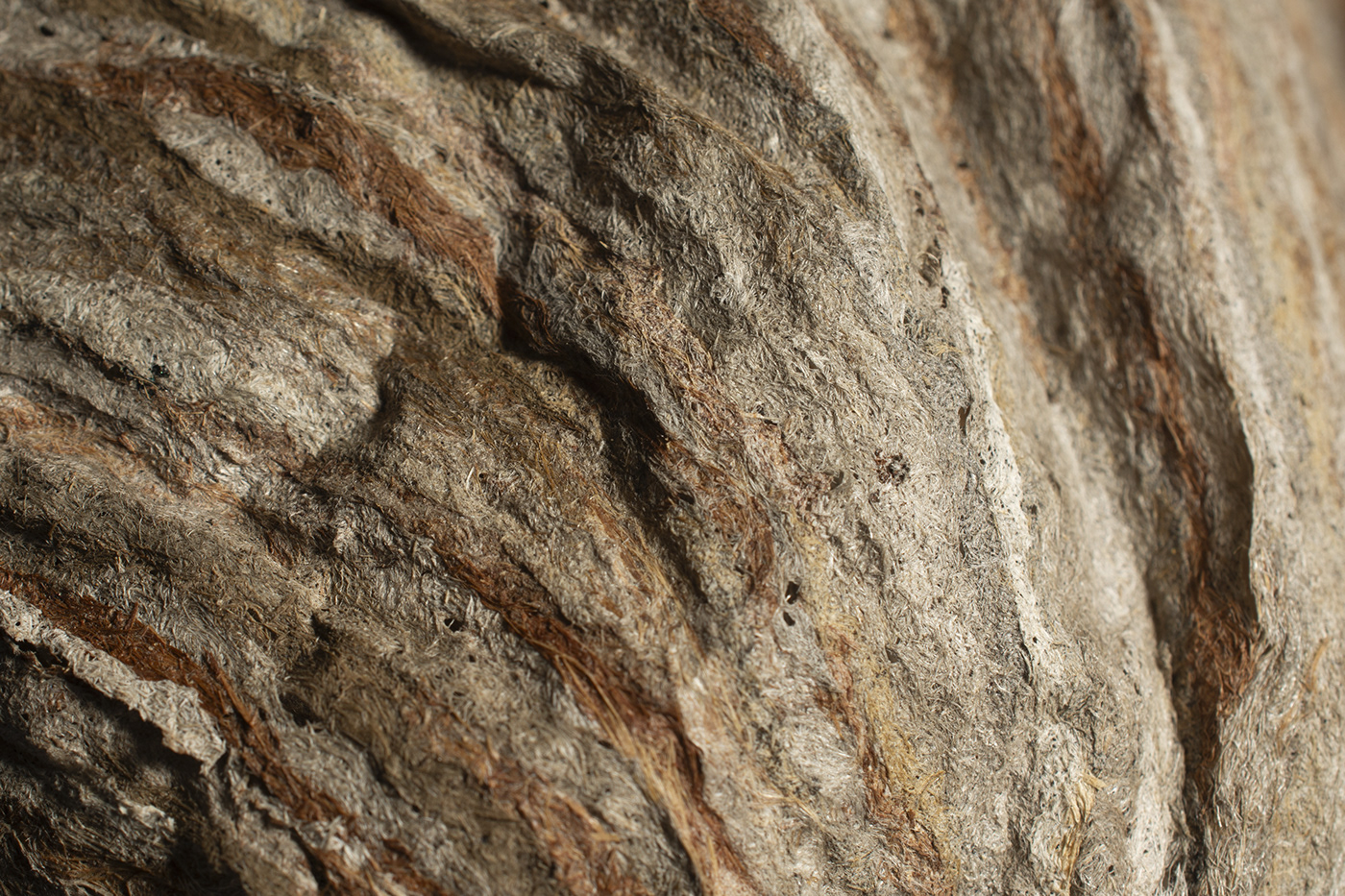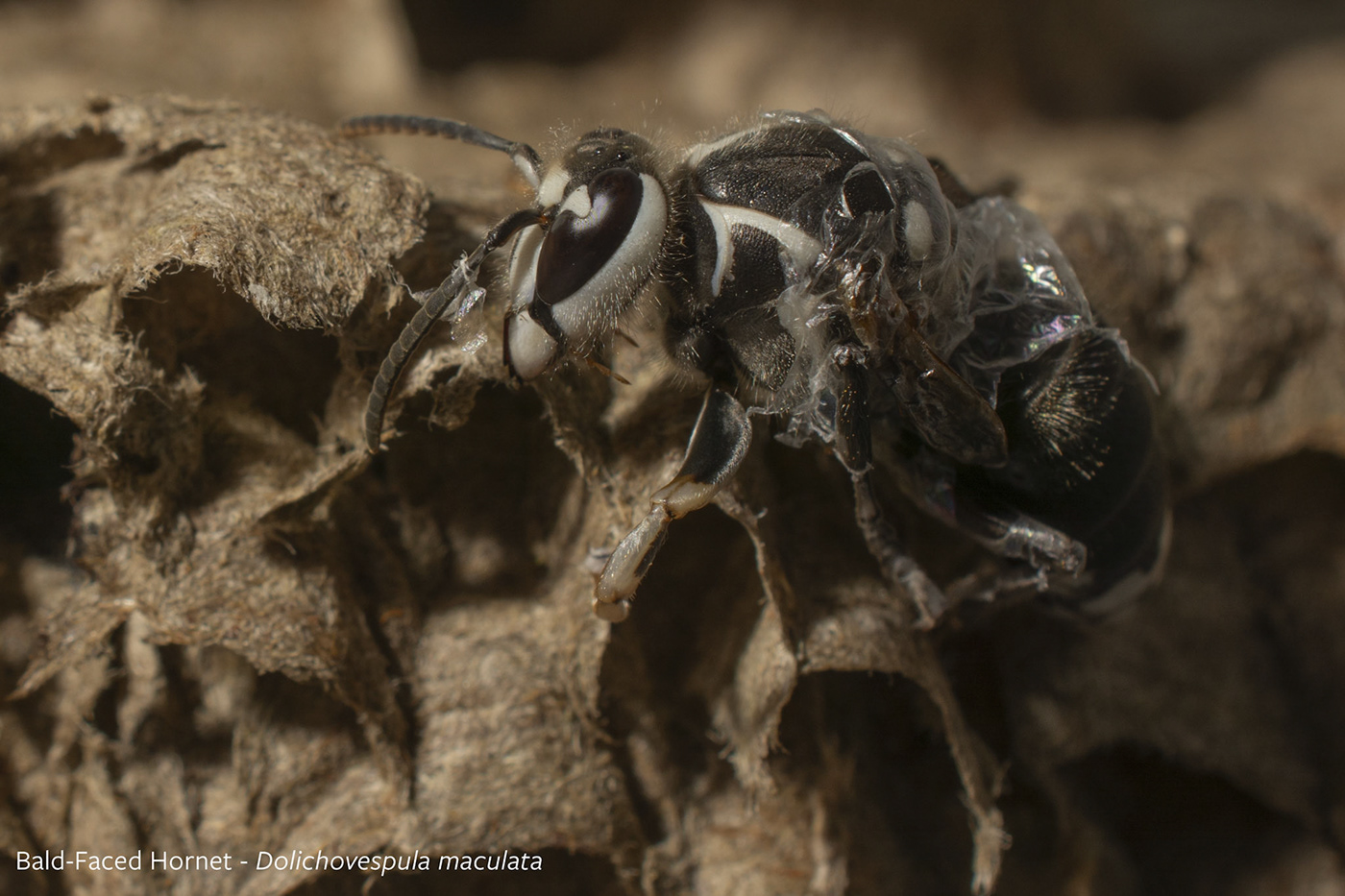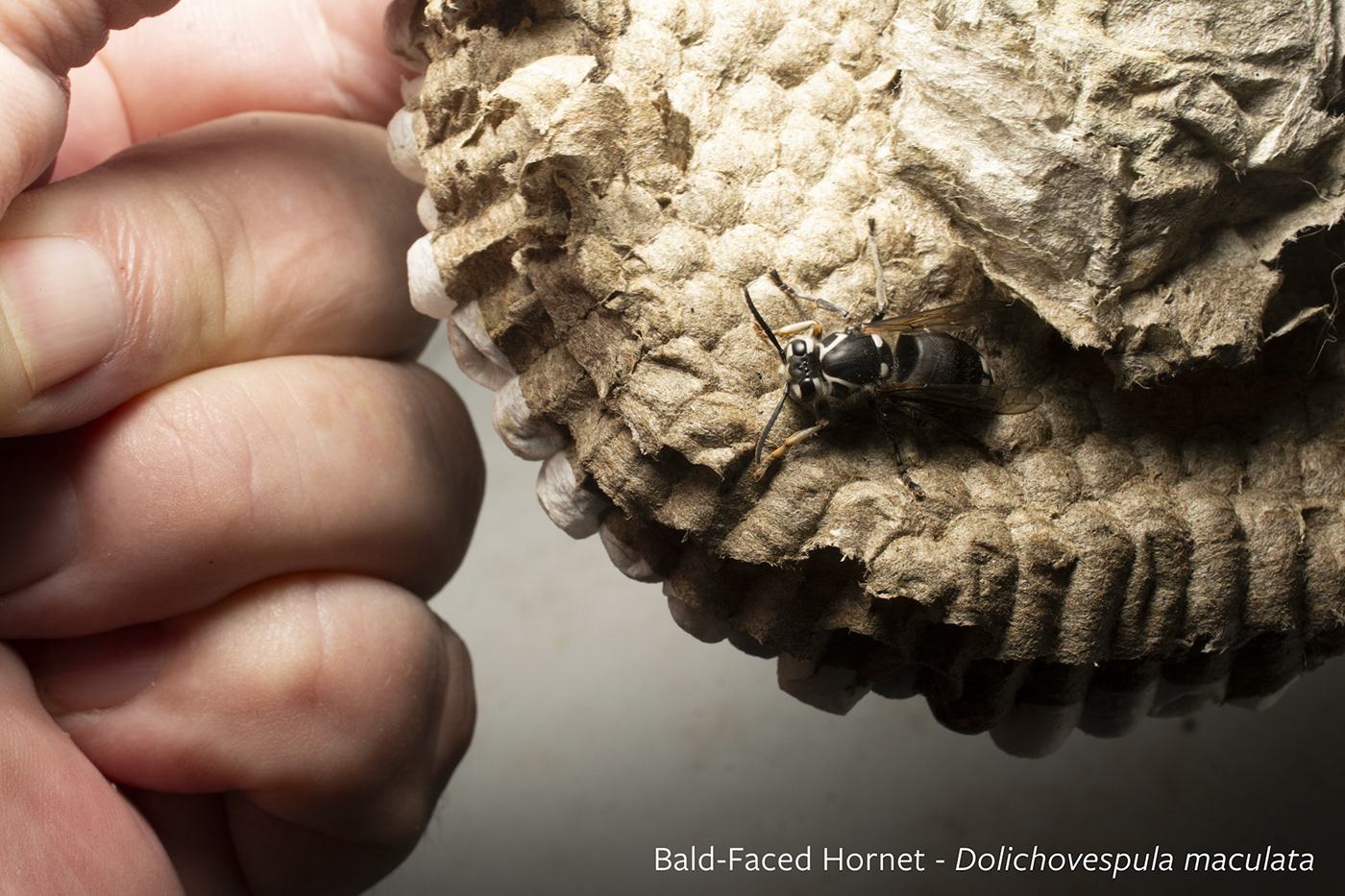This story involves three Bald-faced Hornets that survived a nest poisoning. After the photos were taken, the hornets and their doomed nest were returned to the wild.
All content Copyright 2023 - Emay Ayche, All Rights Reserved.
Surviving Doomsday
Not too high, on a drooping Maple Tree branch, at a local swimming pool, was a cantaloupe-sized paper nest of Bald-faced Hornets that were poisoned to protect pool goers.
I waited two days, to retrieve the “empty” nest for this photo set and took it home.
The paper nest was fragile and as I walked away it started to crumble in my hands and eventually fell apart, revealing a two-tiered comb of paper cells that was inside. I finally got the nest home and placed it in a plastic storage container. I then readied an outdoor setup for, what I hoped would be some great micro-photography.
The smell was awful; damp from rain and poison-soaked paper, plus dead eggs and pupae were awful.
There was a single survivor.

After the sole survivor emerged, the setup was made.

A container and a single diffused speedlight mounted on a pole made up the stage.

Wood fibers from trees and other sources make up most of the outer shell.
"The smell was bad; damp from rain and poison-soaked paper, plus dead eggs and pupae were awful."

Surviving the poison, a new adult (right) emerges from its paper cell. The hornet on the left was instantly killed, two-days earlier by the poison - as it too, was emerging from its cell.

After emerging, this hornet retreated to the side and back of the comb. It cleaned of any residual membrane within a few minutes and instinctively started tending to the nest. In a normal environment, new adults will stay with the nest for two, or three days.

"Where am I? What are you?"

Getting to work, even though the nest is stained with poison.

The were moments when the three hatchlings would be very still.
The overall shoot lasted almost 24 hours, and I thought I had some good shots. I left the sole survivor overnight and I had planned to release it and the nest the next day.

When startled, the would retreat "under" the nest.
The next morning, and much to my surprise, there were now three! None of the three could fly and they were sluggish - I’m not sure if it was from the poison, or if they were waiting on their wings to mature. New adults usually stay at the nest for a few days after hatching.
I took some more pictures and some videos and I returned them to the wild that evening.

They only sting if threatened...but I was nervous, of course. This guy was sluggish and could not fly, as with the other two that hatched. The small tread-like strands dangling from under the mandible are maxillary palpus - they simply manipulate food and material.
I was terrified of these guys as a child, but as I grew older and learned more about insects and nature, I found myself respecting hornets more, and more. I must say, that I learned so much about Vespidae from this project; hornets are very cool creatures.
-Emay
More info at: https://en.wikipedia.org/wiki/Dolichovespula_maculata

